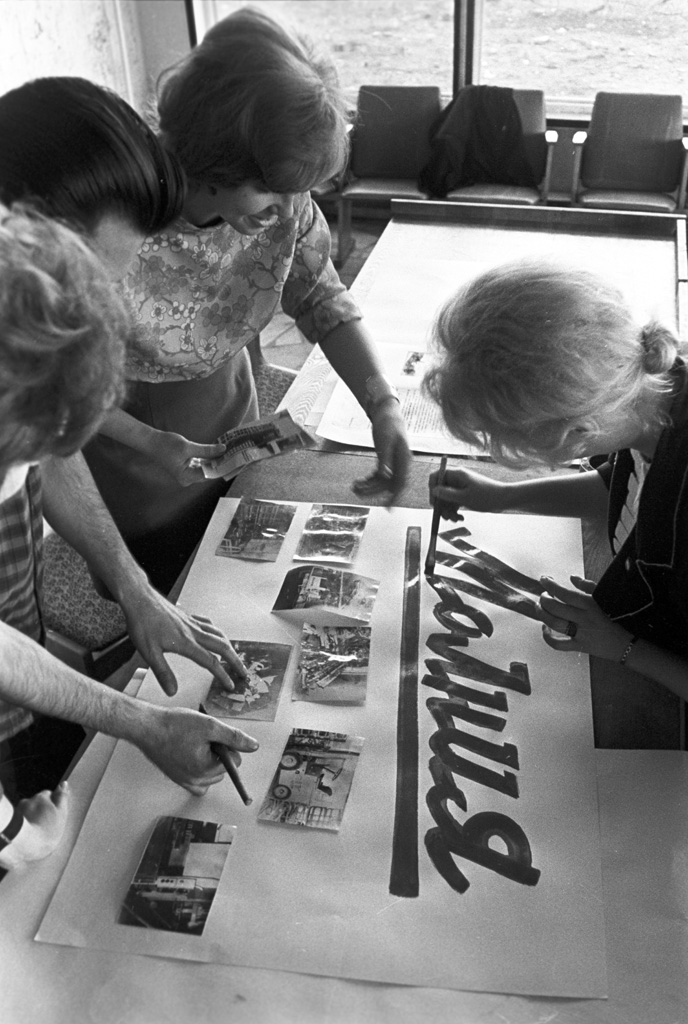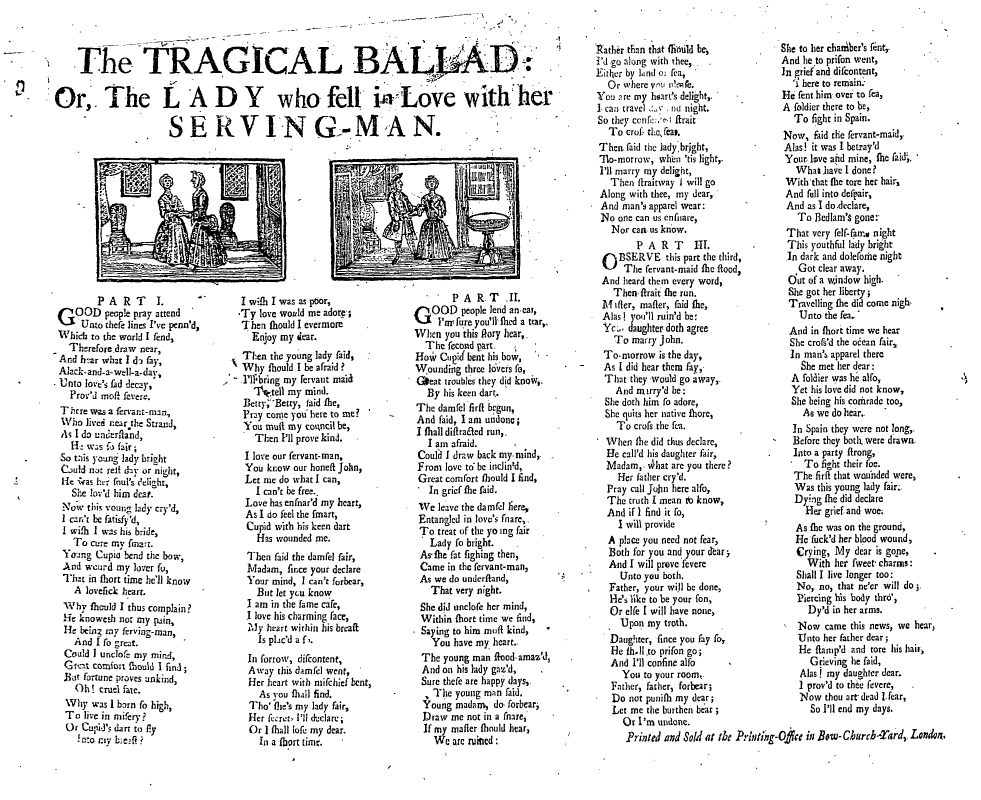|
Pashkevil
A pashkevil ( yi, פּאַשקעוויל; he, פשקוויל pl. pashkevilim ) is a broadside or poster that has been situated on a public wall or location in an Orthodox Jewish community, and most commonly within Hareidi enclaves. Pashkevilim are sometimes distributed anonymously; however, many are posted with rabbinic endorsements or the name of an activist group appended to the bottom. Function Per Samuel Heilman, the pashkevilim: ''...make clear what is virtuous or acceptable behavior and what is not. They serve as expressive media that show what those who prepare and post as well as those who allow the poster to be displayed (the latter by attending to its meaning and not removing or covering it) consider to be acceptable or worthy of notice… The informed observer can thus use such signs as a window through which to glimpse what is appropriate behavior as well as what is on the mind of the community, its interests and concerns.'' Given the unique sociological insight to ... [...More Info...] [...Related Items...] OR: [Wikipedia] [Google] [Baidu] |
Pasquinade
A pasquinade or pasquil is a form of satire, usually an anonymous brief lampoon in verse or prose, and can also be seen as a form of literary caricature. The genre became popular in early modern Europe, in the 16th century, though the term had been used at least as early as the 4th century, as seen in City of God by Augustine of Hippo. Pasquinades can take a number of literary forms, including song, epigram, and satire. Compared with other kinds of satire, the pasquinade tends to be less didactic and more aggressive, and is more often critical of specific persons or groups. The name "pasquinade" comes from ''Pasquino'', the nickname of a Hellenistic statue, the remains of a type now known as a ''Pasquino Group'', found in the River Tiber in Rome in 1501 – the first of a number of "talking statues of Rome" which have been used since the 16th century by locals to post anonymous political commentary. The verse pasquinade has a classical source in the satirical epigrams of anci ... [...More Info...] [...Related Items...] OR: [Wikipedia] [Google] [Baidu] |
Broadside (printing)
A broadside is a large sheet of paper printed on one side only. Historically in Europe, broadsides were used as posters, announcing events or proclamations, giving political views, commentary in the form of ballads, or simply advertisements. In Japan, Chromoxylographic broadsheets featuring artistic prints were common. Description and history The historical type of broadsides, designed to be plastered onto walls as a form of street literature, were ephemera, i.e., temporary documents created for a specific purpose and intended to be thrown away. They were one of the most common forms of printed material between the sixteenth and nineteenth centuries. They were often advertisements, but could also be used for news information or proclamations. Broadsides were a very popular medium for printing topical ballads starting in the 16th century. Broadside ballads were usually printed on the cheapest type of paper available. Initially, this was cloth paper, but later it became common ... [...More Info...] [...Related Items...] OR: [Wikipedia] [Google] [Baidu] |
Dazibao
Big-character posters () are handwritten posters with large characters, usually mounted on walls in public spaces such as universities, factories, government departments, and sometimes directly on the streets. They were used as a means of protest, propaganda, and popular communication. A form of popular political writing, big-character posters did not have a fixed format or style, and could appear in the form of letter, slogan, poem, commentary, etc. Though many different political parties around the world have used slogans and posters as propaganda, the most intense, extensive, and varied use of big-character posters was in China in various political campaigns associated with the Chinese Communist Party (CCP). Big-character posters were first used extensively in the Hundred Flowers Campaign, and they played an instrumental role in almost all the subsequent political campaigns, culminating in the Cultural Revolution. Though the right to write big-character posters was deleted from ... [...More Info...] [...Related Items...] OR: [Wikipedia] [Google] [Baidu] |
Moshe Koppel
Moshe Koppel is an American-Israeli computer scientist, Talmud scholar and political activist. Koppel was born and raised in New York, where he received a traditional Jewish education. He studied at Yeshivat Har Etzion, received a B.A. from Yeshiva University and in 1979 completed his doctorate in mathematics under the supervision of Martin Davis at the Courant Institute of New York University. He spent a post-doctoral year at the Institute for Advanced Study in Princeton before moving to Israel in 1980. He has been a member of the Department of Computer Science in Bar-Ilan University since then. Computer science Koppel is best known for his research on authorship attribution. Together with Shlomo Engelson Argamon and Jonathan Schler, he has shown that statistical analysis of word usage in a document can be used to determine an author's gender, age, native language and personality type. The findings regarding gender generated considerable controversy. In a string of papers, ... [...More Info...] [...Related Items...] OR: [Wikipedia] [Google] [Baidu] |
Wall Newspaper
A wall newspaper or placard newspaper is a hand-lettered or printed newspaper designed to be displayed and read in public places both indoors and outdoors, utilizing vertical surfaces such as walls, boards, and fences. The practice dates back to at the least the years of the Roman Empire. They are often produced by governmental entities, or local authorities in locations where production costs or distribution problems might otherwise make regular newspaper distribution either difficult or unnecessary. 20th-century usage Soviet Russia and Soviet Union During the Russian Revolution of 1917 and the Russian Civil War, which followed, the use of wall newspapers came into vogue in Soviet Russia. These so-called "placard newspapers" are said to have begun due to a chronic shortage of newsprint paper resulting from war conditions, blockade, and economic dislocation."Placard Newspapers", ''Russian Review'', vol. 3, no. 8 (15 April 1925), p. 183. The papers were first used in military bar ... [...More Info...] [...Related Items...] OR: [Wikipedia] [Google] [Baidu] |
Jerusalem Mea Shearim Posters
Jerusalem (; he, יְרוּשָׁלַיִם ; ar, القُدس ) (combining the Biblical and common usage Arabic names); grc, Ἱερουσαλήμ/Ἰεροσόλυμα, Hierousalḗm/Hierosóluma; hy, Երուսաղեմ, Erusałēm. is a city in Western Asia. Situated on a plateau in the Judaean Mountains between the Mediterranean and the Dead Sea, it is one of the oldest cities in the world and is considered to be a holy city for the three major Abrahamic religions: Judaism, Christianity, and Islam. Both Israelis and Palestinians claim Jerusalem as their capital, as Israel maintains its primary governmental institutions there and the State of Palestine ultimately foresees it as its seat of power. Because of this dispute, neither claim is widely recognized internationally. Throughout its long history, Jerusalem has been destroyed at least twice, besieged 23 times, captured and recaptured 44 times, and attacked 52 times. According to Eric H. Cline's tally in Je ... [...More Info...] [...Related Items...] OR: [Wikipedia] [Google] [Baidu] |
Pasquino
Pasquino or Pasquin (Latin: ''Pasquillus'') is the name used by Romans since the early modern period to describe a battered Hellenistic-style statue perhaps dating to the third century BC, which was unearthed in the Parione district of Rome in the fifteenth century. It is located in a piazza of the same name on the northwest corner of the Palazzo Braschi (Museo di Roma); near the site where it was unearthed. The statue is known as the first of the talking statues of Rome, because of the tradition of attaching anonymous criticisms to its base. The satirical literary form pasquinade (or "pasquil") takes its name from this tradition. The actual subject of the sculpture is ''Menelaus supporting the body of Patroclus'', and the subject, or the composition applied to other figures as in the Sperlonga sculptures, occurs a number of times in classical sculpture, where it is now known as a "Pasquino group". The actual identification of the sculptural subject was made in the eighteent ... [...More Info...] [...Related Items...] OR: [Wikipedia] [Google] [Baidu] |
Street Literature
Street literature is any of several different types of publication sold on the streets, at fairs and other public gatherings, by travelling hawkers, pedlars or chapmen, from the fifteenth to the nineteenth centuries. Robert Collison's account of the subject describes street literature as the "forerunner of the popular press". Leslie Shepard's "History of Street Literature" identifies a range of different publications as indicated by his subtitle: "The Story of Broadside Ballads, Chapbooks, Proclamations, News-Sheets, Election Bills, Tracts, Pamphlets, Cocks, Catchpennies, and Other Ephemera". Street literature therefore includes several different printed formats and publication types. The main formats are: Broadside ballad Broadside ballads are traditional ballads printed on one side of a full sheet or half sheet of paper, often in landscape orientation. Intended to be pasted on to walls for public consultation. Chapbook Chapbooks were small, paper-covered booklets, usually pr ... [...More Info...] [...Related Items...] OR: [Wikipedia] [Google] [Baidu] |
Old Yishuv
The Old Yishuv ( he, היישוב הישן, ''haYishuv haYashan'') were the Jewish communities of the southern Syrian provinces in the Ottoman period, up to the onset of Zionist aliyah and the consolidation of the New Yishuv by the end of World War I. As opposed to the later Zionist aliyah and the New Yishuv, which began with the First Aliyah (of 1882) and was more based on a socialist and/or secular ideology emphasizing labor and self-sufficiency, many Jews of the Old Yishuv, whose members had continuously resided in or had come to the Southern Levant in the earlier centuries, were largely religious Jews, who depended on external donations (halukka) for financial support. The Old Yishuv developed after a period of severe decline in Jewish communities of the Southern Levant during the early Middle Ages, and was composed of three clusters. The oldest group consisted of the Ladino-speaking Sephardic Jewish communities who settled in Ottoman Palestine in the late Mamluk and early ... [...More Info...] [...Related Items...] OR: [Wikipedia] [Google] [Baidu] |
Loshon Hora
''Lashon hara'' (or ''loshon horo'', or ''loshon hora'') ( he, לשון הרע; "evil tongue") is the halakhic term for speech about a person or persons that is negative or harmful to them, even though it is true. It is speech that damages the person(s) that are talked about either emotionally or financially, or lowers them in the estimation of others.Telushkin, Joseph. ''A Code of Jewish Ethics: Volume 1 - You Shall Be Holy''. New York: Bell Tower, 2006. p. 332. ''Lashon hara'' differs from the more severe prohibition of ''hotzaat shem ra'', "making a bad name," in that ''hotzaat shem ra'' consists of untrue statements. ''Lashon hara'' is considered to be a very serious sin in the Jewish tradition. The communicator of ''lashon hara'' (which is included in ''rechilut'') violates the Torah prohibition of ''lo telech rachil b'ameicha,'' translating to "thou shalt not go up and down as a among thy people" (''Leviticus 19:16'' KJV). Definition Speech is considered to be ''lashon ... [...More Info...] [...Related Items...] OR: [Wikipedia] [Google] [Baidu] |
National Library Of Israel
The National Library of Israel (NLI; he, הספרייה הלאומית, translit=HaSifria HaLeumit; ar, المكتبة الوطنية في إسرائيل), formerly Jewish National and University Library (JNUL; he, בית הספרים הלאומי והאוניברסיטאי, translit=Beit Ha-Sfarim Ha-Le'umi ve-Ha-Universita'i), is the library dedicated to collecting the cultural treasures of Israel and of Jewish heritage. The library holds more than 5 million books, and is located on the Givat Ram campus of the Hebrew University of Jerusalem (HUJI). The National Library owns the world's largest collections of Hebraica and Judaica, and is the repository of many rare and unique manuscripts, books and artifacts. History B'nai Brith library (1892–1925) The establishment of a Jewish National Library in Jerusalem was the brainchild of Joseph Chazanovitz (1844–1919). His idea was creating a "home for all works in all languages and literatures which have Jewish authors, even ... [...More Info...] [...Related Items...] OR: [Wikipedia] [Google] [Baidu] |








